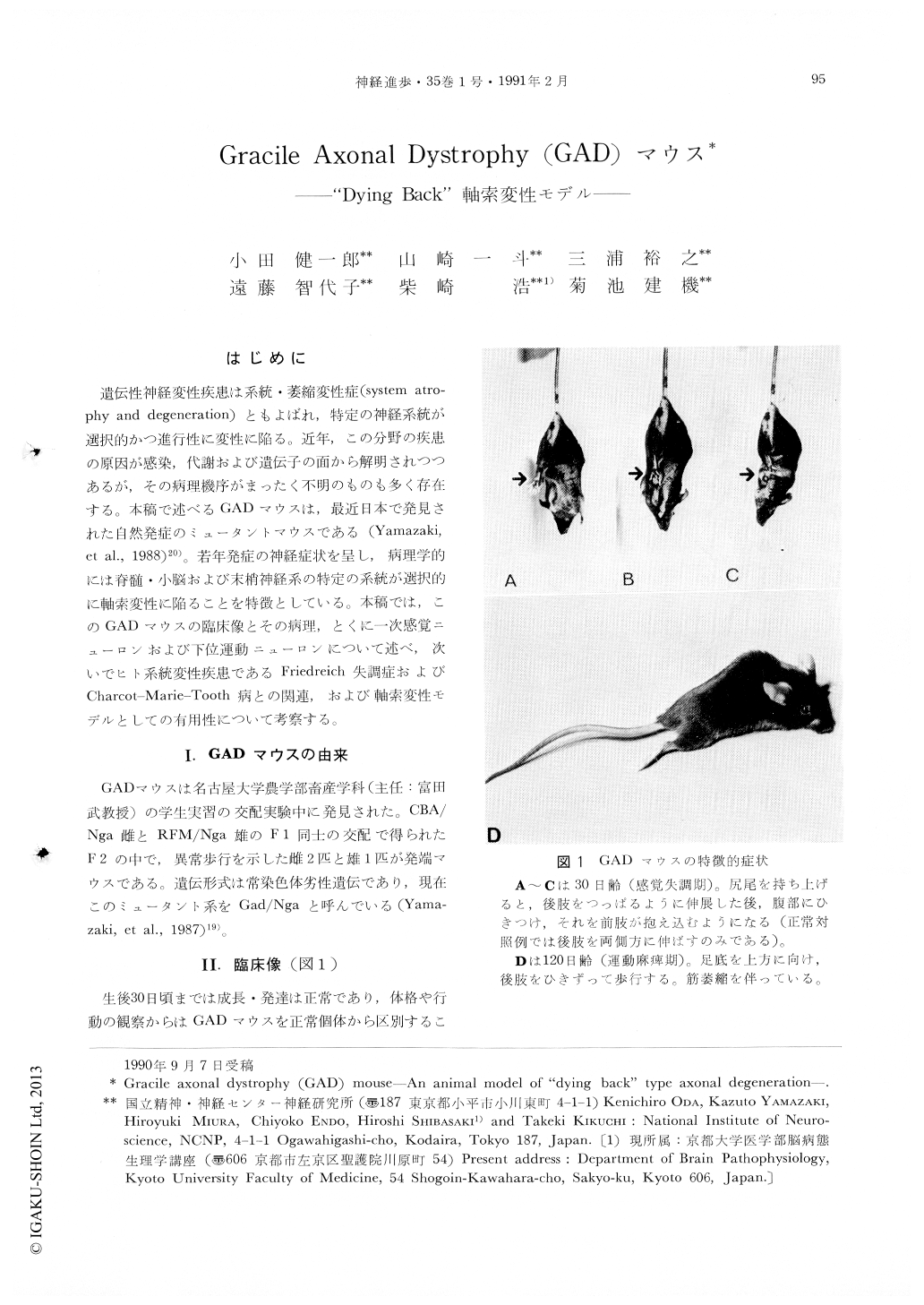Japanese
English
- 有料閲覧
- Abstract 文献概要
- 1ページ目 Look Inside
はじめに
遺伝性神経変性疾患は系統・萎縮変性症(system atrophy and degeneration)ともよばれ,特定の神経系統が選択的かつ進行性に変性に陥る。近年,この分野の疾患の原因が感染,代謝および遺伝子の面から解明されつつあるが,その病理機序がまったく不明のものも多く存在する。本稿で述べるGADマウスは,最近日本で発見された自然発症のミュータントマウスである(Yamazaki,et al.,1988)20)。若年発症の神経症状を呈し,病理学的には脊髄・小脳および末梢神経系の特定の系統が選択的に軸索変性に陥ることを待徴としている。本稿では,このGADマウスの臨床籐とその病理,とくに一次感覚ニューロンおよび下位運動ニューロンについて述べ,次いでヒト系統変性疾患であるFriedreich失調症およびCharcot-Marie-Tooth病との関連,および軸索変性モデルとしての有用性について考察する。
A new hereditary neurological disorder of mice, gracile axonal dystrophy (GAD), is reported. It is the result of a spontaneous mutation and is transmitted by a single autosomal recessive gene gad. This disorder is characterized by progressive sensory ataxia (first detectable about 4 weeks after birth) and motor paresis of the hindlimbs (detectable about 10 weeks). The histological study revealed, together with lesions in the centrally directing axons of the dorsal root ganglion cells (gracile axonal dystrophy), degeneration of the peripherally projecting axons of sensory and motor nerves beginning at their distal ends (the primary sensory endings of Ia fibers in muscle spindles and the motor nerve terminals in the endplates)Then, the degeneration progressed proximally, but leaving their soma, namely the primary sensory and alpha motor neurons, morphologically intact. These findings indicate that this mutant mouse is a useful model for understanding the pathogenesis of the naturally occurring dying-back type pathological process, which is postulated to underlie certain human heredodegenerative diseases, i.e., Friedreich's disease, Charcot-Marie-Tooth disease.

Copyright © 1991, Igaku-Shoin Ltd. All rights reserved.


